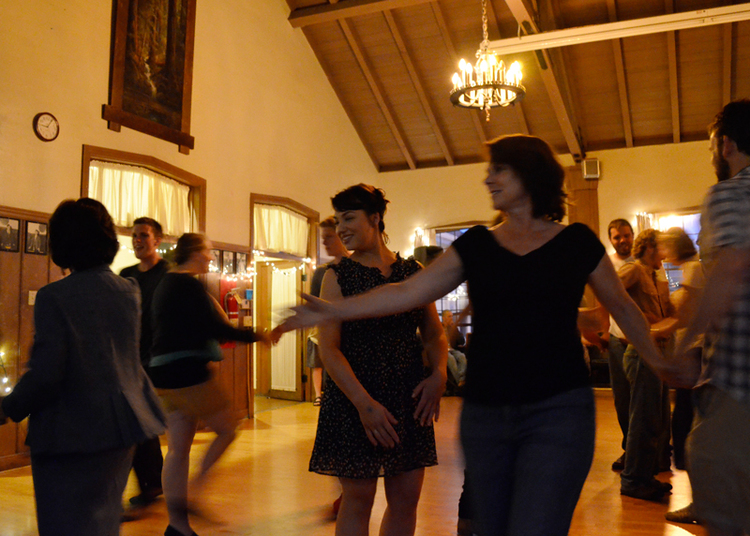Square Dance ( aka Traditional Squares or Old Time Square Dance): a dance with a basic group of four couples (eight people) arranged in a square, with one couple on each side, all facing the middle of the square; there can be as many squares as the dance hall will hold.


Contra Dance : consists of two, four, or six long lines of couples or pairs formed starting from the stage and down the dance hall. Throughout the course of a dance, couples progress up and down these lines, oftentimes dancing with each other couple in the line.
Barn Dance: A community dance and social, which may consist of old-time square dances, contra dances and other folk dancing, depending on the caller and the band. Barn dances usually feature:
- A limited number of basic movements, or “calls,” which are taught before each dance, enabling anyone to join the dance without lessons or prior dance experience;
- No partner required;
- Live music, usually with a string band; and
- No particular style of dress expected or required.


Modern Western Square Dancing ("MWSD") : A more formal, structured style of square dancing derived from traditional square dance. Generally, lessons or classes are needed to learn the movements before attending a dance; the music is oftentimes recorded; and a western style of dress is expected if not required. Participants are typically part of a Square Dance Club, and progress through different programs or skill levels. Callers usually follow the International Association of Square Dance Callers’ lists of dances and calls.